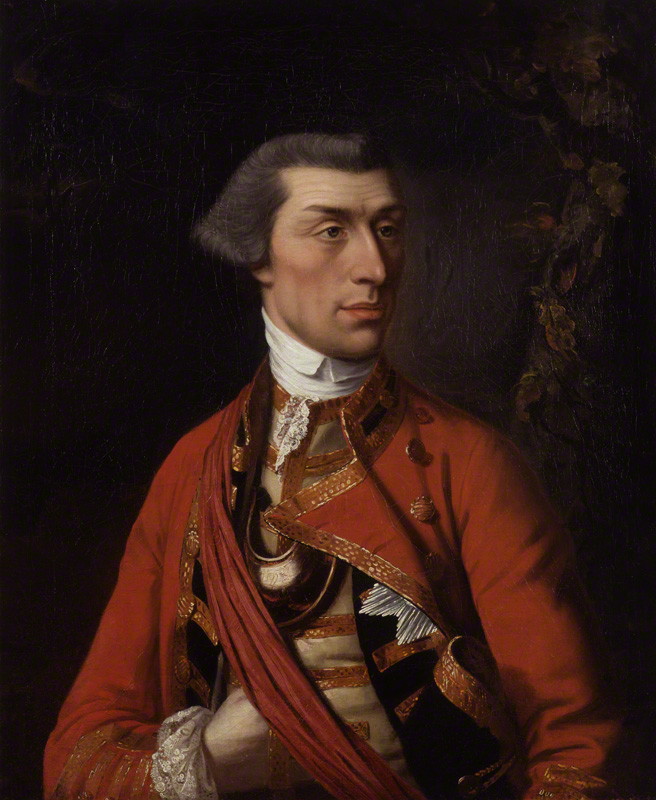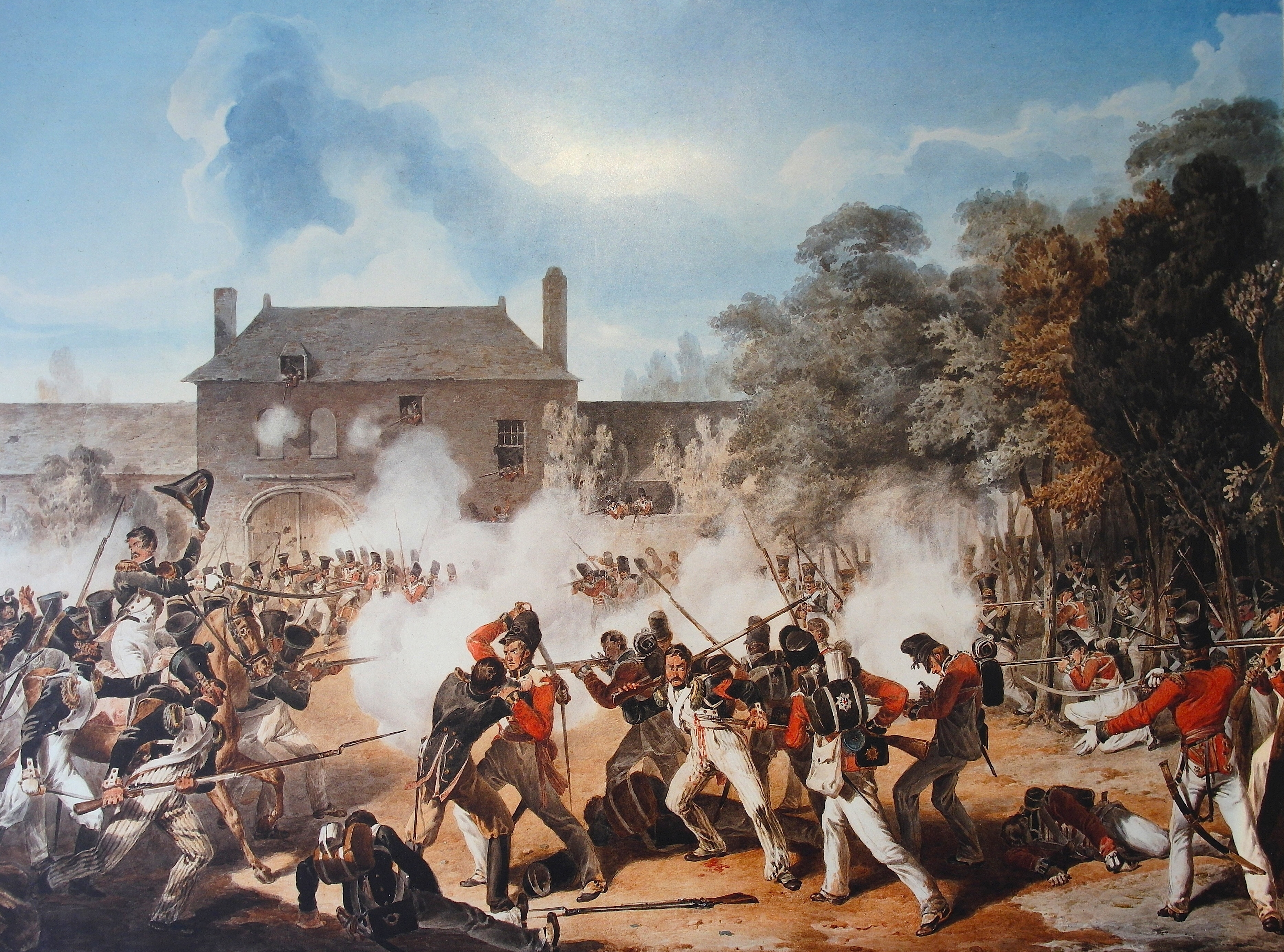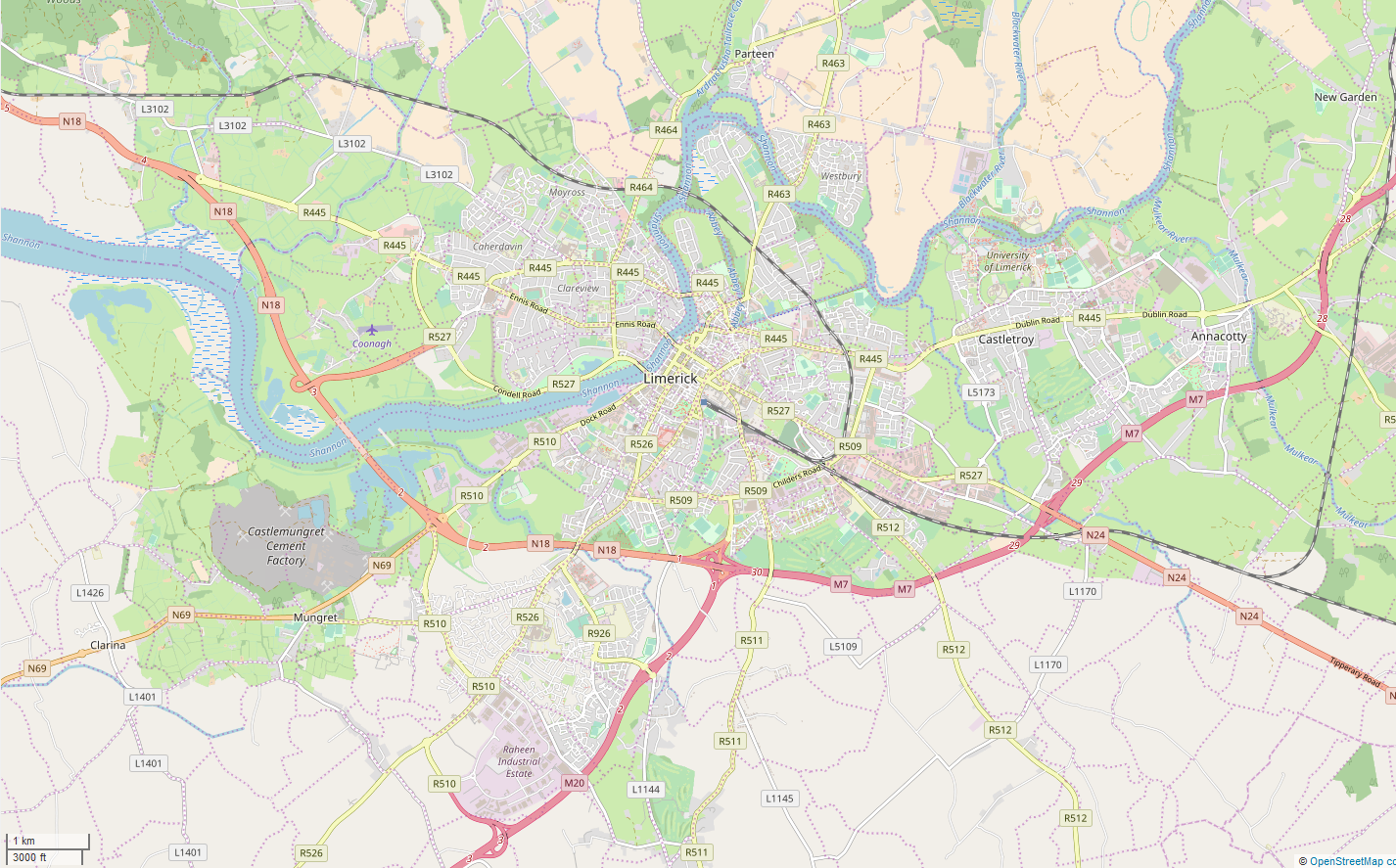|
John Cope (British Army Officer)
Sir John Cope (July 1688 – 28 July 1760) was a British soldier, and Whig Member of Parliament, representing three separate constituencies between 1722 and 1741. He is now chiefly remembered for his defeat at Prestonpans, the first significant battle of the Jacobite rising of 1745 and which was commemorated by the tune " Hey, Johnnie Cope, Are Ye Waking Yet?", which still features in modern Scottish folk music and bagpipe recitals. His military service included the wars of the Spanish and Austrian Successions. As with many of the senior officers present at Dettingen in 1743, victory resulted in promotion, and he was appointed military commander in Scotland shortly before the 1745 Rising. Although exonerated by a court-martial in 1746, Prestonpans ended his career as a field officer. In 1751, he was appointed governor of the Limerick garrison, and deputy to Viscount Molesworth, commander of the army in Ireland. He died in London on 28 July 1760. Biographical deta ... [...More Info...] [...Related Items...] OR: [Wikipedia] [Google] [Baidu] |
39th (Dorsetshire) Regiment Of Foot
The 39th (Dorsetshire) Regiment of Foot was an infantry regiment of the British Army, raised in 1702. Under the Childers Reforms it amalgamated with the 54th (West Norfolk) Regiment of Foot to form the Dorsetshire Regiment in 1881. History Early years The regiment was first raised by Adam Loftus, 1st Viscount Lisburne as Viscount Lisburne's Regiment of Foot in 1689 but was disbanded in 1697. It was re-raised in Ireland, without lineal connection to the previous regiment, by Colonel Richard Coote as Richard Coote's Regiment of Foot in August 1702. The regiment landed at Lisbon in June 1707 for service in the War of the Spanish Succession.Cannon, p. 3 It saw action at the Battle of La Gudina in May 1709Cannon, p. 5 and then remained in Portugal until 1713 when it embarked for Gibraltar and then moved to Menorca later in the year.Cannon, p. 8 It was posted to Ireland in 1719 and sailed to Gibraltar in 1726 to reinforce the garrison.Cannon, p. 9 The regiment sailed for Jamaica in ... [...More Info...] [...Related Items...] OR: [Wikipedia] [Google] [Baidu] |
Whigs (British Political Party)
The Whigs were a political party in the Parliaments of England, Scotland, Ireland, Great Britain and the United Kingdom. Between the 1680s and the 1850s, the Whigs contested power with their rivals, the Tories. The Whigs became the Liberal Party when the faction merged with the Peelites and Radicals in the 1850s. Many Whigs left the Liberal Party in 1886 over the issue of Irish Home Rule to form the Liberal Unionist Party, which merged into the Conservative Party in 1912. The Whigs began as a political faction that opposed absolute monarchy and Catholic emancipation, supporting constitutional monarchism and parliamentary government, but also Protestant supremacy. They played a central role in the Glorious Revolution of 1688 and were the standing enemies of the Roman Catholic Stuart kings and pretenders. The period known as the Whig Supremacy (1714–1760) was enabled by the Hanoverian succession of George I in 1714 and the failure of the Jacobite rising of 1715 ... [...More Info...] [...Related Items...] OR: [Wikipedia] [Google] [Baidu] |
Icomb
Icomb is a village in the Gloucestershire Cotswolds, near to Stow on the Wold. The population taken at the 2011 census was 202. The village appears as ''Iacumbe'' in the Domesday Book. Parish Church The Church of St Mary is the parish church which has a Norman north doorway and an Early English south porch and doorway dating from around 1249. It is a grade I listed building. Icomb Place The Grade 1 Listed building Icomb Place on edge of the village was significantly altered by Sir John Blaket in 1421, a knight who fought with Henry V at the Battle of Agincourt and died in 1431, whose tomb A tomb ( ''tumbos'') or sepulchre () is a repository for the remains of the dead. It is generally any structurally enclosed interment space or burial chamber, of varying sizes. Placing a corpse into a tomb can be called '' immurement'', alth ... is in the church. References External links Villages in Gloucestershire Cotswold District Cotswolds {{Gloucestershire-g ... [...More Info...] [...Related Items...] OR: [Wikipedia] [Google] [Baidu] |
Icomb Place
Icomb Place (pronounced "Ickum") is a medieval manor house on the edge of the village of Icomb, near Stow on the Wold in Gloucestershire. The word "place" in this context is thought to be a precursor of "palace". Description The house is a Grade I listed building. Mentioned in the Doomsday Book and owned by Roger de Lacy at the time, the house has undergone considerable alteration since its 11th-century beginnings with only the moat and North Wing remaining. The house seems to have started out as a modest courtyard dwelling, but later (some time before 1423) was made grander by the creation of the great hall and remodelling of the solar (with barrel vaulted timber roof). The building has many unusual features: for example, no room has a right angle on its plan view, all rooms being a trapezium in form. The oldest parts of the building date from between 1086 and 1420 and include the undercroft (northwest wing), the battlemented gateway and the southeast wing, originally the ... [...More Info...] [...Related Items...] OR: [Wikipedia] [Google] [Baidu] |
Wars Of The Three Kingdoms
The Wars of the Three Kingdoms were a series of conflicts fought between 1639 and 1653 in the kingdoms of Kingdom of England, England, Kingdom of Scotland, Scotland and Kingdom of Ireland, Ireland, then separate entities in a personal union under Charles I of England, Charles I. They include the 1639 to 1640 Bishops' Wars, the First English Civil War, First and Second English Civil Wars, the Irish Confederate Wars, the Cromwellian conquest of Ireland and the Anglo-Scottish war (1650–1652), Anglo-Scottish War of 1650–1652. They resulted in the execution of Charles I, the abolition of monarchy, and founding of the Commonwealth of England, a unitary state which controlled the British Isles until the Stuart Restoration in 1660. Political and religious conflict between Charles I and his opponents dated to the early years of his reign. While the vast majority supported the institution of monarchy, they disagreed on who held ultimate authority. Cavalier, Royalists generally argued ... [...More Info...] [...Related Items...] OR: [Wikipedia] [Google] [Baidu] |
Cope Baronets
There have been four baronetcies created for persons with the surname Cope. The Baronetcy of Cope of Hanwell, Oxfordshire was created in the Baronetage of England on 29 June 1611 for Anthony Cope of Hanwell, Oxfordshire#Hanwell Castle, Hanwell Castle. He was a descendant of Sir William Cope (cofferer), William Cope, (Cofferer to Henry VII of England, Henry VII) to whom the manor of Hanwell was granted in 1498, and Principal Chamberlain of Queen of England Catherine Parr, Sir Anthony Cope (author), Anthony Cope. He was Member of Parliament for Banbury (UK Parliament constituency), Banbury and for Oxfordshire (UK Parliament constituency), Oxfordshire. The second, third and fifth Baronets also represented both Banbury and Oxfordshire. In 1699 The sixth Baronet purchased Bramshill House, Hampshire which became the family seat. He was member for Plymouth (UK Parliament constituency), Plymouth and Tavistock (UK Parliament constituency), Tavistock. The seventh Baronet represented Banbu ... [...More Info...] [...Related Items...] OR: [Wikipedia] [Google] [Baidu] |
St Giles In The Fields
St Giles in the Fields is the Anglican parish church of the St Giles district of London. The parish stands within the London Borough of Camden and forms part of the Diocese of London. The church, named for St Giles the Hermit, began as the chapel of a 12th-century monastery and leper hospital in the fields between Westminster and the City of London and now gives its name to the surrounding urban district of St Giles in the West End of London, situated between Seven Dials, Bloomsbury, Holborn and Soho. The present church is the third on the site since 1101 and was rebuilt most recently in 1731–1733 in Palladian style to designs by the architect Henry Flitcroft. History 12th–16th centuries Hospital and chapel The first recorded church on the site was a chapel of the Parish of Holborn attached to a monastery and leper hospital founded by Matilda of Scotland, "Good Queen Maud", consort of Henry I between the years 1101 and 1109. The foundation would later become attach ... [...More Info...] [...Related Items...] OR: [Wikipedia] [Google] [Baidu] |
Coldstream Guards
The Coldstream Guards is the oldest continuously serving regular regiment in the British Army. As part of the Household Division, one of its principal roles is the protection of the Monarchy of the United Kingdom, monarchy; due to this, it often participates in state ceremonial occasions. The Regiment has consistently provided formations on deployments around the world and has fought in the majority of the major conflicts in which the British Army has been engaged. The Regiment has been in continuous service and has never been amalgamated. It was formed in 1650 as 'Monck's Regiment of Foot' and was then renamed the 'Lord General's Regiment of Foot Guards' after the Stuart Restoration, Restoration in 1660. With George Monck, 1st Duke of Albemarle, George Monck's death in 1670 it was again renamed the 'Coldstream Regiment of Foot Guards' after Coldstream, the location in Scotland from which it marched to help restore the monarchy in 1660. Its name was again changed to the 'Coldstre ... [...More Info...] [...Related Items...] OR: [Wikipedia] [Google] [Baidu] |
Richard Molesworth, 3rd Viscount Molesworth
Field Marshal Richard Molesworth, 3rd Viscount Molesworth, PC (Ire), FRS (1680 – 12 October 1758) was an Anglo-Irish army officer and politician. He fought in the Battle of Blenheim before being appointed aide-de-camp to the Duke of Marlborough during the War of the Spanish Succession. During the Battle of Ramillies, Molesworth offered Marlborough his own horse after Marlborough fell from the saddle. Molesworth then recovered his commander's charger and slipped away: by these actions he helped to save Marlborough's life. Molesworth went on Lieutenant of the Ordnance in Ireland and was wounded at the Battle of Preston during the Jacobite rising of 1715 before serving as Master-General of the Ordnance in Ireland and then Commander-in-Chief, Ireland. Military career Born the younger son of Robert Molesworth, 1st Viscount Molesworth and Letitia Molesworth (née Coote, daughter of Richard Coote, Lord Coloony), Molesworth abandoned his legal studies and was commissioned a ... [...More Info...] [...Related Items...] OR: [Wikipedia] [Google] [Baidu] |
Limerick
Limerick ( ; ) is a city in western Ireland, in County Limerick. It is in the Provinces of Ireland, province of Munster and is in the Mid-West Region, Ireland, Mid-West which comprises part of the Southern Region, Ireland, Southern Region. With a population of 102,287 at the 2022 census of Ireland, 2022 census, Limerick is the List of urban areas in the Republic of Ireland, third-most populous urban area in Republic of Ireland, Ireland, and the List of settlements on the island of Ireland by population, fourth-most populous city on the island of Ireland. It was founded by Scandinavian settlers in 812, during the Viking Age. The city straddles the River Shannon, with the historic core of the city located on King's Island, Limerick, King's Island, which is bounded by the Shannon and Abbey River, Limerick, Abbey Rivers. Limerick is at the head of the Shannon Estuary, where the river widens before it flows into the Atlantic Ocean. Limerick City and County Council is the Local gov ... [...More Info...] [...Related Items...] OR: [Wikipedia] [Google] [Baidu] |
Bagpipe
Bagpipes are a woodwind instrument using enclosed reeds fed from a constant reservoir of air in the form of a bag. The Great Highland bagpipes are well known, but people have played bagpipes for centuries throughout large parts of Europe, Northern Africa, Western Asia, around the Persian Gulf and northern parts of South Asia. The term ''bagpipe'' is equally correct in the singular or the plural, though pipers usually refer to the bagpipes as "the pipes", "a set of pipes" or "a stand of pipes". Bagpipes are part of the aerophone group because to play the instrument you must blow air into it to produce a sound. Construction A set of bagpipes minimally consists of an air supply, a bag, a chanter, and usually at least one drone. Many bagpipes have more than one drone (and, sometimes, more than one chanter) in various combinations, held in place in stocks—sockets that fasten the various pipes to the bag. Air supply The most common method of supplying air to the bag ... [...More Info...] [...Related Items...] OR: [Wikipedia] [Google] [Baidu] |









